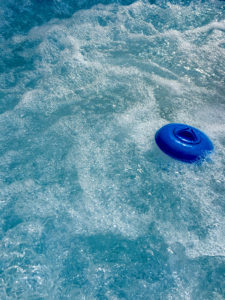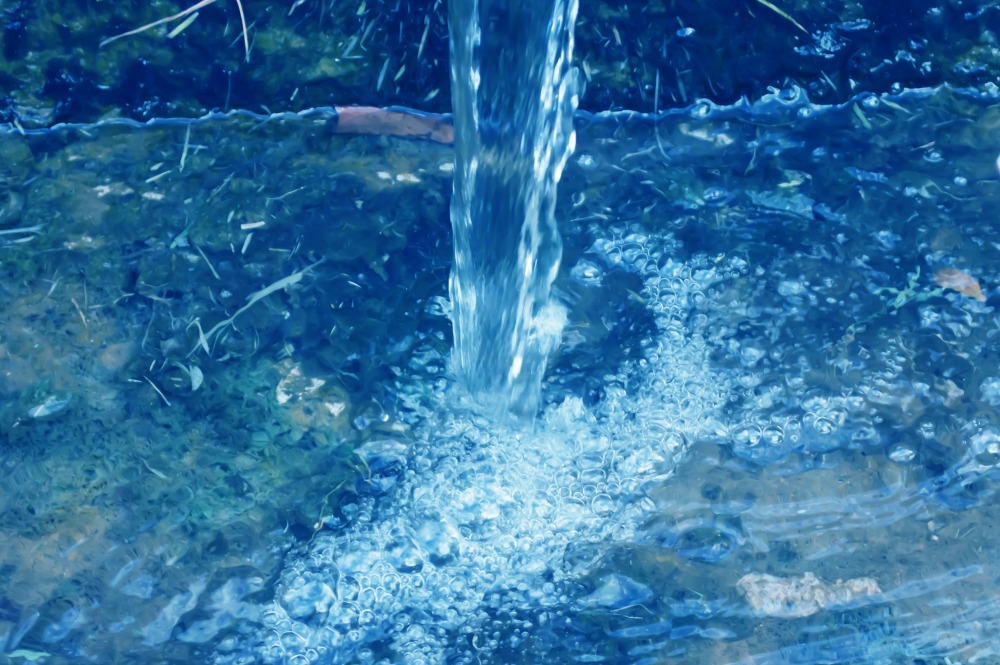We often get asked about sanitizing and shocking pools, how treatment works, and so on. Do I need to add a sanitizer to my pool? If so, how often? Do I need to shock my pool? If so, how do I do it? How long do I have to wait before I use my pool after a treatment? In this July blog, we’re going to give you the low-down on sanitizing, shocking and treating your pool.
Pool Sanitizing 101
Truthfully, you don’t need to add sanitizer to your pool, but you’re welcome to read more about it. Rest assured, you can swim in your pool, even if there are no sanitizing chemicals in the water. Do you want to swim in that water, however? We would say no.
Sanitizer is what works to kill not only bacteria, but other organic compounds that seep into your pool. These contaminants make their way to your water via the wind blowing and from the swimming enthusiasts who enter your pool. These various sources can introduce contaminants to the water that can make swimming not just uncomfortable, but dangerous. People who swim in contaminated waters can develop skin, eye, and lung irritations, as well as diarrhea, urinary tract infections, and other health issues. Be aware of where you swim!
Definitely add sanitizer to your pool to make it safe for everyone to enjoy. Chlorine is the most common sanitizer people choose for their pool water. Yet, chlorine is not the only option. No matter what chemical you ultimately choose for sanitizer, be sure to add the proper quantity and don’t go over. Too much sanitizer can create an imbalance and increase the risk for problems.
Sanitizers Mixed With Stabilizers
Chlorine and sanitizers’ compounds can be broken down by contaminants and by sunlight that hits your pool. You’ll need a sanitizer to keep the water clean as well as a sanitizer to maintain the right levels of chlorine. Generally, you’ll be able to find a sanitizer that is already stabilized, so you can add both at the same time.
How often do I need to add sanitizer to my pool? Good question! It depends on your pool, the environment and how frequently your pool is used. For example, if your pool gets used every day, you may need to shock your pool regularly compared to someone who swims once a week. Here’s how you can tell that you need to add sanitizer to your pool.
Increased Use Of Sanitizers
For regular heavy pool use, we suggest bumping your sanitizer levels up and maintaining it consistently to keep the chemicals in balance. After inclement weather, you may need to add more chlorine to your pool due to possible contaminants brought in by the weather.
Anytime you change the water, you’ll have to add sanitizer to your pool. If chlorine is your sanitizer and you smell it strongly, it’s a good indication your chemical levels are not properly balanced. Depending on your pool water’s composition, add what you need to remove the odor and restore balance.
Shocking Your Pool
Shocking is a process that can clear a cloudy pool and maintain a better balance of chemicals. Although not a necessity, shocking your pool is a good idea to keep your pool clear and comfortable to swim in.
No matter how careful you are, your pool will become contaminated. Those contaminants come from your body and from the surrounding environment. Even with a pool cover, contaminants will still end up in your water system. Pool chemicals and the pool filter are designed to keep everything clean, but they’re not full-proof. Specifically, chlorine will kill bacteria, yet once it’s finished the job, it becomes deactivated and will cloud your water. This is what happens to lead up to a shock treatment. Here’s how to shock your pool on your own.
When, Why and How
Always shock your pool at night for normal maintenance. If the circumstances are different (i.e. a strong chlorine smell or cloudy water), shock your pool immediately. The time of day doesn’t matter. For some pool owners, this might be once a week. For others, it might be far less frequent.
Test your pool to ensure it has the right balance of chemicals. If it does, your cloudiness is not being caused by deactivated chlorine. (At this point, we advise calling in the professionals to take a closer look to diagnose the problem).
Once you have started the shock treatment, you should not get into your pool for 8 hours. More importantly, vacuuming your pool prior to shocking will remove any debris that could counteract the treatment itself.
Step-by-Step
 The first step is to choose the right kind of shock treatment. There are a few different treatments to choose from; the first of which is a calcium hypochlorite shock. This is often the best type of shock to equalize your chlorine levels and add calcium to the water. You’ll need to dissolve the treatment separately in water before adding it to your pool. Then, wait at least 8 hours before swimming.
The first step is to choose the right kind of shock treatment. There are a few different treatments to choose from; the first of which is a calcium hypochlorite shock. This is often the best type of shock to equalize your chlorine levels and add calcium to the water. You’ll need to dissolve the treatment separately in water before adding it to your pool. Then, wait at least 8 hours before swimming.
A lithium hypochlorite shock is a better option if the calcium levels in your pool are high enough. This shock doesn’t require you to dissolve the treatment before adding it to your pool, but you’ll still need to wait 8 hours before entering your pool.
A DiChlor shock uses cyanuric acid to stabilize your chlorine levels. This shock treatment is recommended for hot climates where pools receive more sun exposure and lose their chlorine faster. Unlike other treatments, you don’t need to dissolve a DiChlor shock before adding it to your pool. You do still need to wait 8 hours before swimming.
The last type of shock is called a potassium peroxymonosulfate shock. This 4th treatment doesn’t include any chlorine—ideal for pool owners who use bromine instead of chlorine to keep their pool clean. Due to no chlorine, it doesn’t need to be dissolved and it also doesn’t require you to wait 8 hours before swimming. Most treatments of this variety require you to wait only 15 minutes. Even if your pool is a chlorine pool, you can still use this shock treatment.
Pool Treatment and Timing
A wide variety of opinions exists when it comes to how soon after treating your pool you can swim in it. Some people will say you don’t have to wait at all; others say you only have to wait a half hour. Others say you should wait 12 hours before entering your pool. So…which is correct? The truth is that none of these are right. How long you must wait until you can use your pool depends entirely on what type of treatment you applied.
For the majority of treatments and chemicals, you can usually swim after 2 hours of adding the chemicals. To be extra safe, we recommend waiting until your filter and pump have turned all of the water over once. For reference, if you swim within 15 minutes of adding muriatic acid, you could potentially swim into a hot acid spot and harm yourself.
After shocking your pool, you will need to wait and more than 8 hours. The wait is less about the treatment dissipating and more about the treatment becoming effective. The pool needs time to reach safe levels of chlorine. Depending on the type of sanitizer and whether or not you use a chlorine neutralizer in your pool, the wait could be upwards of a few days. In this instance, you should only go swimming once you have tested your water and know your chlorine is at a safe level.
Erik’s Aquatic Care is always here to answer questions you may have as a current or future pool owner. Cheers!

